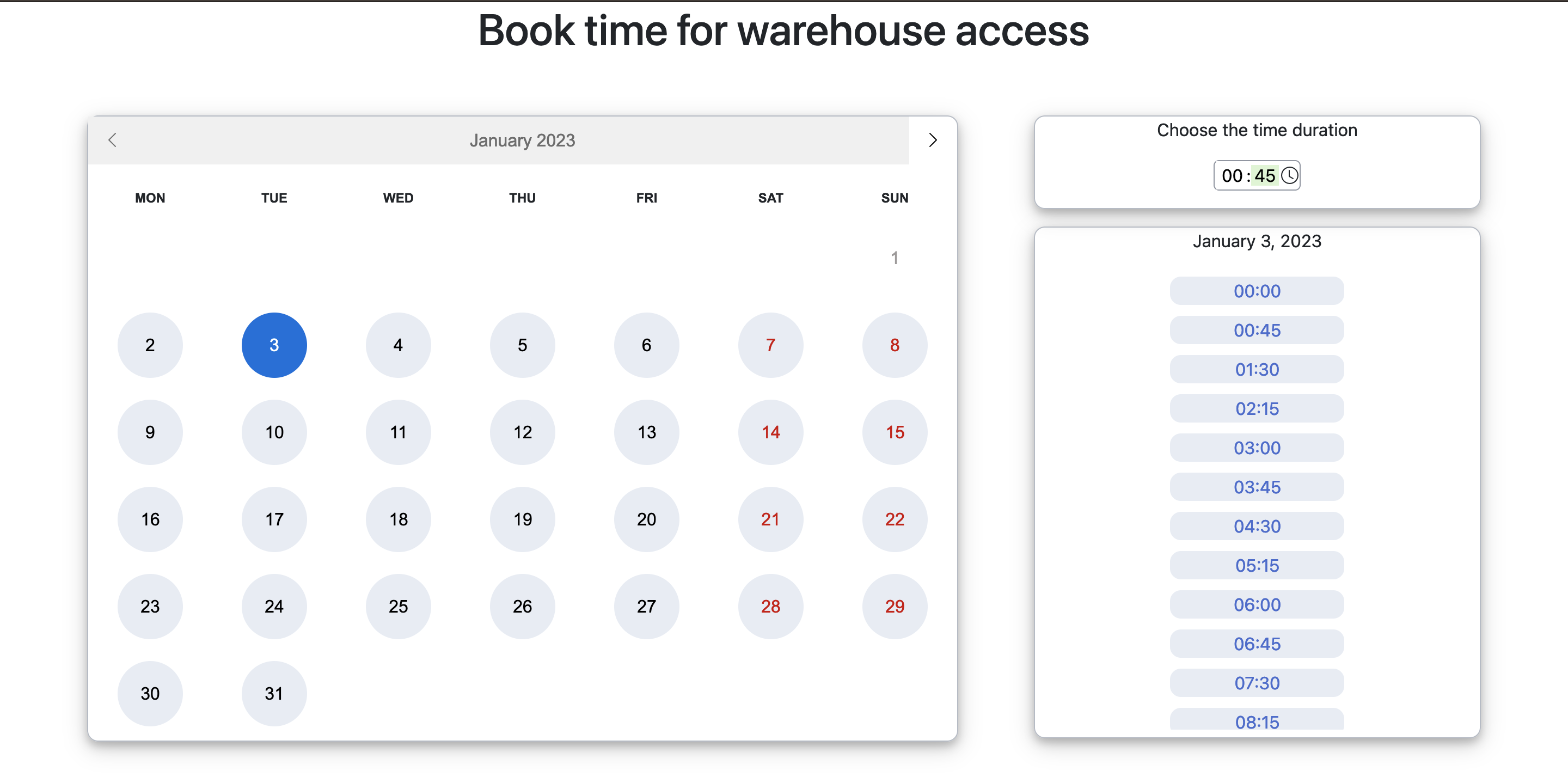- Install docker(either vai
brew install dockeror by downloading Docker desktop) - Install ruby
3.0- rbenv -
rbenv installin the project directory - rvm -
rvm installin the project directory
- rbenv -
- Install Node.js and yarn
- Run
bundle install - Run
yarn install - Start PostgreSQL via
docker-compose up -d- this shouldn't interfere with an already existing PostgreSQL database as it is running on the
5433port, but to be safe that there is nothing running on that same port, you can runlsof -i :5433beforehand to check
- this shouldn't interfere with an already existing PostgreSQL database as it is running on the
- Run
bin/rails db:setupto create development and testing databases and to seed initial bookings.
bin/dev
bundle exec rspec spec
- Feature tests
- More tests for services and the
Bookingmodel - SCSS and UI
- Make the page responsive - currently built for large screens
- Extract SCSS colors as variables
- Add pretty loading indication when opening site & changing months
- Make the time slot buttons ask for confirmation
- Handle available time slots for today - a user can currently select times that have already passed today.
- Add validation for this.
- Display the time slots correctly.
- Maybe handle this on the front-end with regular
setTimeouts?
- Send UTC time to the front-end at all times(currently we're sending time in client time zone from the back-end on normal requests and utc via action cable)
- Don't hide the selected day time slots once the user changes the month
- We hide this because subscribing to updates would require a seperate websocket subscription and the way that data should be handled changes as well.
- Consider modifying our DB structure to be able to use locks instead of using advisory locks.
- Store selected context as query variables(e.g.
?month=02-2022&day=28-02-2022&duration=01:15) in the URL to make it easier to work with the system. - Move all text to locales and add
i18n-jsto have correct translations on the front-end - If this was something we'd actually deploy to production
- CI pipeline configuration
- authentification(or at least an e-mail)
- send e-mail with confirmation and an iCal file.
- Use redis for actioncable
- Depending on the expected amount of users, consider using AnyCable to offload connection handling and reduce costs long-term.
